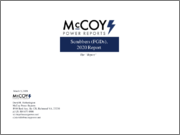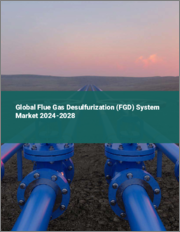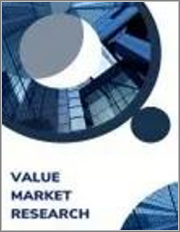
|
시장보고서
상품코드
1544621
세계의 습식 배연 탈황 시스템 시장 - 기회, 성장 촉진요인, 산업 동향 분석과 예측(2024-2032년)Wet Flue Gas Desulfurization System Market, Opportunity, Growth Drivers, Industry Trend Analysis and Forecast, 2024-2032 |
||||||
습식 배연 탈황 시스템 시장 규모는 산업 공정 및 발전으로부터 이산화황(SO2) 배출을 줄이기 위한 엄격한 환경 규제에 따라 2024년부터 2032년까지 연평균 복합 성장률(CAGR) 6.8%를 나타낼 것으로 예측됩니다.
공해와 기후 변화에 대처하기 위해 세계 각국의 정부가 대기질 기준을 강화하는 가운데, 산업계는 이러한 배출 제한을 충족하기 위해 선진기술의 채용을 강요하고 있습니다. 대기질 개선 및 규제 준수 추진은 발전, 철강 제조, 시멘트 제조 등의 분야에서 습식 배연 탈황(FGD) 시스템 수요를 촉진하고 있습니다.
기업은 배출을 억제할 뿐만 아니라 운영 효율성을 높이는 기술에 대한 투자를 추진하고 있습니다. 습식 배연 탈황 시스템은 건축자재에 재사용되는 석고와 같은 귀중한 제품별 회수를 촉진함으로써 매우 중요한 역할을 하고 있습니다. 게다가, 스크러빙 효율의 향상과 유지보수의 필요성 감소와 같은 기술적 진보가 제품의 채택을 더욱 향상시킬 것으로 보입니다.
용도별로 보면 화학제품 및 석유화학제품 분야의 습식 배연 탈황 시스템 시장은 2024-2032년에 현저한 CAGR을 나타낼 것으로 보입니다. 이러한 급증은 이러한 섹터와 관련된 높은 SO2 배출량으로 인한 것입니다. 엄격한 환경 규제에 대응하고 생태 및 풋 프린트를 줄이기 위해 화학 및 석유 화학 플랜트는 습식 배연 탈황 시스템을 채택하고 있습니다. 이 시스템은 배기 가스에서 SO2 제거가 뛰어나며 대량의 배기 가스를 능숙하게 처리하므로 이 부문의 성장에 박차를 가하고 있습니다.
유럽의 습식 배연 탈황 시스템 산업은 엄격한 환경 규제와 대기 오염과 기후 변화에 대항하기 위한 SO2 배출 감축 노력을 통해 2032년까지 현저한 CAGR로 성장할 것으로 예상됩니다. 유럽은 산업배출지령(IED) 및 유럽연합 그린딜(EU Green Deal) 등의 지령에 의해 세계적으로 엄격한 배출기준을 마련하고 있으며, 산업배출원으로부터의 SO2 배출량의 대폭적인 삭감을 의무화 있습니다.
목차
제1장 조사 방법과 조사 범위
제2장 주요 요약
제3장 습식 배연 탈황 시스템 산업 인사이트
- 생태계 분석
- 규제 상황
- 업계에 미치는 영향요인
- 성장 촉진요인
- 업계의 잠재적 위험 및 과제
- 성장 가능성 분석
- Porter's Five Forces 분석
- PESTEL 분석
제4장 경쟁 구도
- 소개
- 전략 대시보드
- 혁신과 지속가능성의 전망
제5장 시장 규모와 예측 : 용도별, 2021-2032년
- 주요 동향
- 발전소
- 화학제품 및 석유화학제품
- 시멘트
- 금속가공 및 광업
- 제조업
- 기타
제6장 시장 규모와 예측 : 지역별, 2021-2032년
- 주요 동향
- 북미
- 미국
- 캐나다
- 멕시코
- 유럽
- 독일
- 영국
- 프랑스
- 스페인
- 이탈리아
- 네덜란드
- 아시아태평양
- 중국
- 인도
- 일본
- 한국
- 인도네시아
- 호주
- 베트남
- 중동 및 아프리카
- 사우디아라비아
- 아랍에미리트(UAE)
- 남아프리카
- 라틴아메리카
- 브라질
- 칠레
- 아르헨티나
제7장 기업 프로파일
- Babcock and Wilcox Enterprises, Inc.
- CECO Environmental
- Ducon Infratechnologies Ltd.
- GEA Group Aktiengesellschaft
- General Electric
- Hitachi Zosen Inova AG
- KC Cottrell India
- KCH Services, Inc.
- Marsulex Environmental Technologies
- Mitsubishi Heavy Industries, Ltd.
- Nederman Holding AB
- SA HAMON
- Thermax Limited.
- Tri-Mer Corporation
- Valmet
- Verantis Environmental Solutions Group
Wet flue gas desulfurization system market size is predicted to witness a 6.8% CAGR from 2024 to 2032 driven by stringent environmental regulations aimed at reducing sulfur dioxide (SO2) emissions from industrial processes and power generation. As governments worldwide tighten air quality standards to address pollution and climate change, industries are compelled to adopt advanced technologies to meet these emission limits. The push for better air quality and adherence to regulations fuels the demand for wet flue gas desulfurization (FGD) systems in sectors like power generation, steel manufacturing, and cement production.
Companies are channeling investments into technologies that not only curb emissions but also boost operational efficiency. Wet FGD systems play a pivotal role by facilitating the recovery of valuable by-products, like gypsum, which finds reuse in construction materials. Moreover, technological strides, including enhanced scrubbing efficiency and diminished maintenance needs, will further bolster product adoption.
The overall industry is segmented into application, and region.
Based on application, the wet flue gas desulfurization system market from the chemical and petrochemical segment is set to witness a notable CAGR during 2024-2032. This surge is attributed to the high SO2 emissions associated with these sectors. To align with stringent environmental regulations and lessen their ecological footprint, chemical and petrochemical plants turn to wet FGD systems. These systems also excel in SO2 removal from exhaust gases and adeptly manage large flue gas volumes, adding to the segment growth.
Europe wet flue gas desulfurization system industry is anticipated to grow at a notable CAGR through 2032 attributed to rigorous environmental regulations and commitment to reducing SO2 emissions to combat air pollution and climate change. Europe is home to some stringent emission standards globally, driven by directives, such as the Industrial Emissions Directive (IED) and the European Union Green Deal, which mandate significant reductions in SO2 emissions from industrial sources.
Table of Contents
Chapter 1 Methodology and Scope
- 1.1 Research design
- 1.1.1 Research approach
- 1.1.2 Data Collection methods
- 1.2 Base estimates and calculations
- 1.2.1 Base year calculations
- 1.2.2 Key trends for market estimation
- 1.3 Forecast model
- 1.4 Primary research and validation
- 1.4.1 Primary sources
- 1.4.2 Data mining sources
- 1.5 Market definitions
Chapter 2 Executive Summary
- 2.1 Industry 360° synopsis, 2021 - 2032
Chapter 3 Wet Flue Gas Desulfurization System Industry Insights
- 3.1 Industry ecosystem analysis
- 3.2 Regulatory landscape
- 3.3 Industry impact forces
- 3.3.1 Growth drivers
- 3.3.2 Industry pitfalls and challenges
- 3.4 Growth potential analysis
- 3.5 Porter's Analysis
- 3.5.1 Bargaining power of suppliers
- 3.5.2 Bargaining power of buyers
- 3.5.3 Threat of new entrants
- 3.5.4 Threat of substitutes
- 3.6 PESTEL Analysis
Chapter 4 Competitive landscape, 2023
- 4.1 Introduction
- 4.2 Strategic dashboard
- 4.3 Innovation and sustainability landscape
Chapter 5 Market Size and Forecast, By Application, 2021 - 2032 (USD Billion)
- 5.1 Key trends
- 5.2 Power Plants
- 5.3 Chemical and Petrochemical
- 5.4 Cement
- 5.5 Metal Processing and Mining
- 5.6 Manufacturing
- 5.7 Others
Chapter 6 Market Size and Forecast, By Region, 2021 - 2032 (USD Billion)
- 6.1 Key trends
- 6.2 North America
- 6.2.1 U.S.
- 6.2.2 Canada
- 6.2.3 Mexico
- 6.3 Europe
- 6.3.1 Germany
- 6.3.2 UK
- 6.3.3 France
- 6.3.4 Spain
- 6.3.5 Italy
- 6.3.6 Netherlands
- 6.4 Asia Pacific
- 6.4.1 China
- 6.4.2 India
- 6.4.3 Japan
- 6.4.4 South Korea
- 6.4.5 Indonesia
- 6.4.6 Australia
- 6.4.7 Vietnam
- 6.5 Middle East and Africa
- 6.5.1 Saudi Arabia
- 6.5.2 UAE
- 6.5.3 South Africa
- 6.6 Latin America
- 6.6.1 Brazil
- 6.6.2 Chile
- 6.6.3 Argentina
Chapter 7 Company Profiles
- 7.1 Babcock and Wilcox Enterprises, Inc.
- 7.2 CECO Environmental
- 7.3 Ducon Infratechnologies Ltd.
- 7.4 GEA Group Aktiengesellschaft
- 7.5 General Electric
- 7.6 Hitachi Zosen Inova AG
- 7.7 KC Cottrell India
- 7.8 KCH Services, Inc.
- 7.9 Marsulex Environmental Technologies
- 7.10 Mitsubishi Heavy Industries, Ltd.
- 7.11 Nederman Holding AB
- 7.12 S.A. HAMON
- 7.13 Thermax Limited.
- 7.14 Tri-Mer Corporation
- 7.15 Valmet
- 7.16 Verantis Environmental Solutions Group

















